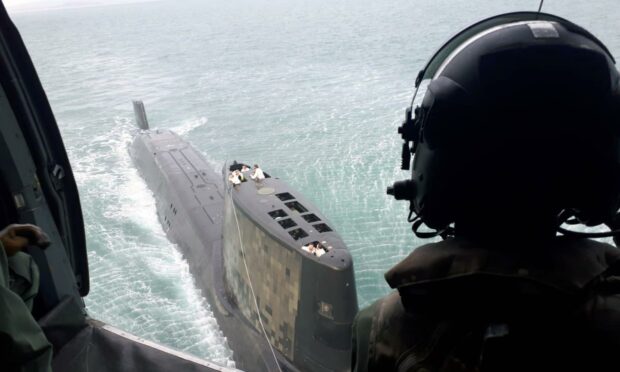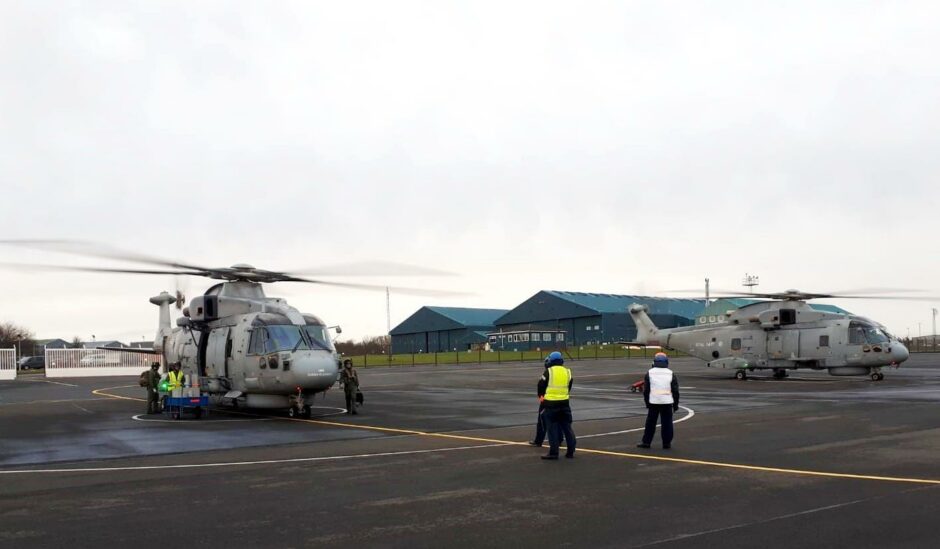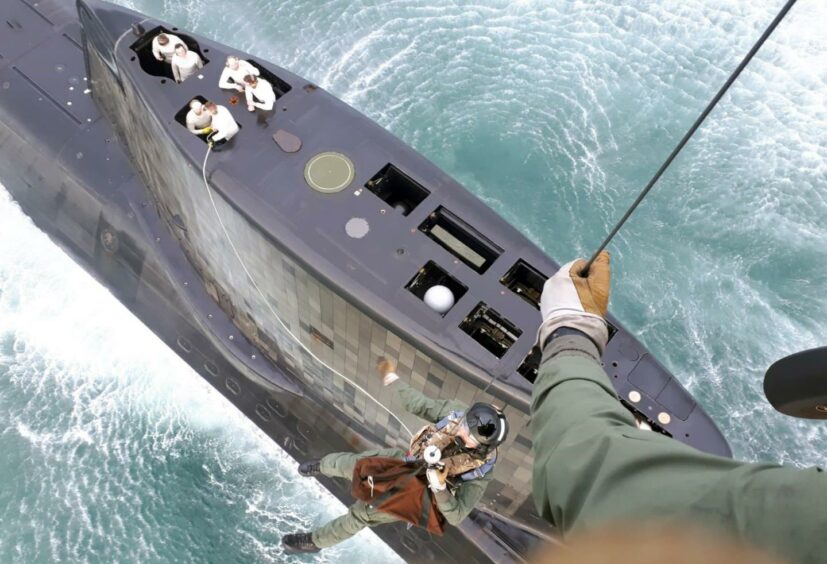Royal Navy personnel have gone head-to-head in a series of warfare training exercises off the coast of Scotland.
The Navy’s most advanced submarine, an Astute-class hunter-killer, and its most potent adversary, a Merlin Mk2 helicopter, played cat and mouse during a series of live training exercises near HMS Gannet in Prestwick.
Perspective submarine commanders and trainee helicopter sub-hunters pitted their skills against each other during a week of intense training in a bid to earn their stripes.
The exercises formed part of the final sea-going phase of the force’s intense Submarine Command-qualifying course – known as the Perisher.
The 105-year-old world-renowned course is known as one of the most testing selection procedures in the military.
Commander James Taylor, Commanding Officer of the Merlin training unit 824 Naval Air Squadron said: “We took 12 trainees and two aircraft from our base at RNAS Culdrose to HMS Gannet at Prestwick for a week of live anti-submarine warfare exercises.
“For the trainees, this is the culmination of a long and demanding flying training pipeline. Having learnt how to fly and safely operate the aircraft as individuals, the detachment made them work together as a crew, to fight the Merlin Mk2 against live submarines.
“They’ve spent countless hours in the simulators and flying training sorties, but this short, sharp period has taken their experience to a new level.”
Finding their feet at sea
Stalking them above the water were trainee Merlin Mk2 helicopters pilots, observers and aircrew from the Fleet Air Arm.
While the submariners attempted to evade detection and carry out a series of missions, they were hunted by the helicopters above.
The Merlin Mk2 helicopter is armed with powerful dipping-sonar and sonobuoys, enabling them to listen for the tell-tale sounds of a boat moving through the depths.
The aircrews also practiced secondary roles in their capacity as maritime patrol aircraft, such as winching personnel to and from a boat at sea.
Commander Taylor said such exercises enable personnel to experience real-world scenarios in preparation for becoming the Navy’s “elite sub-hunters.”
He added: “Operating in an unpredictable environment forces them to deal with a myriad of real-world challenges – not least the changeable Scottish weather – having to constantly think on their feet and adapt their plans.
“None of our trainees had worked with a real submarine before. To pit themselves against the finest in the Submarine Service pushes them to become the Royal Navy’s elite sub-hunters.”


